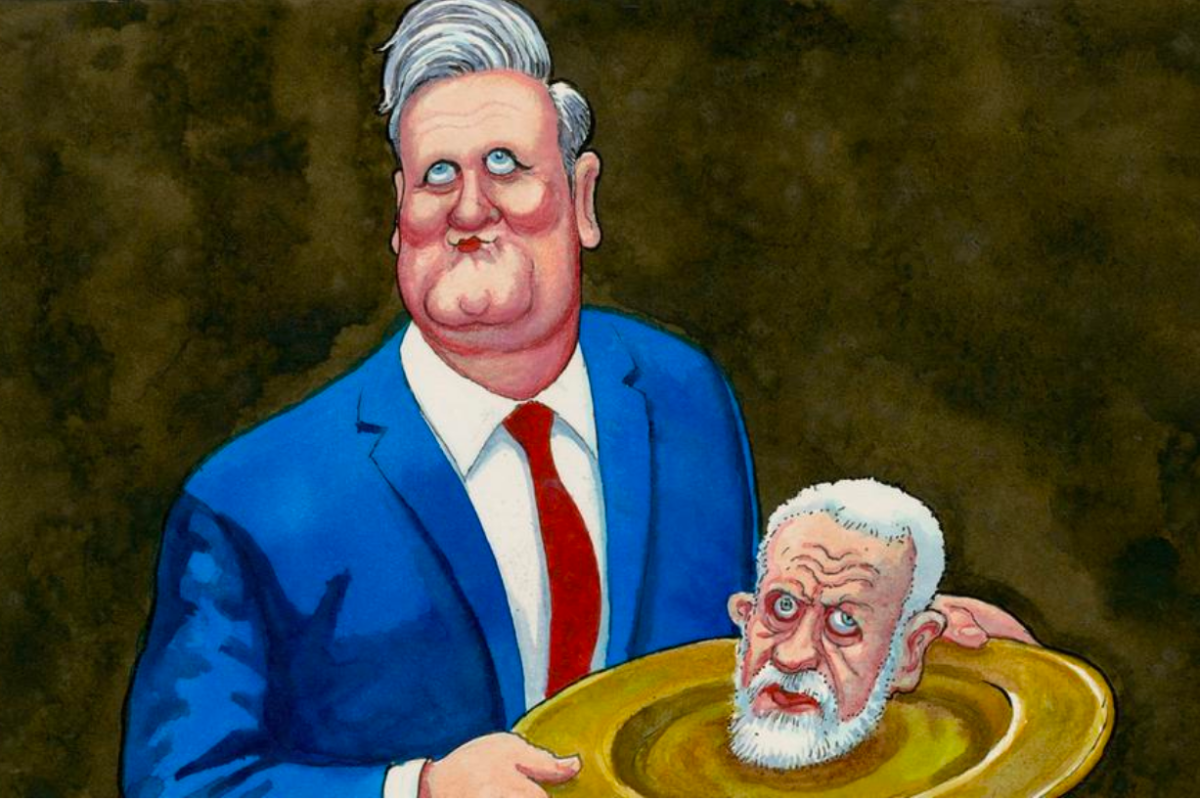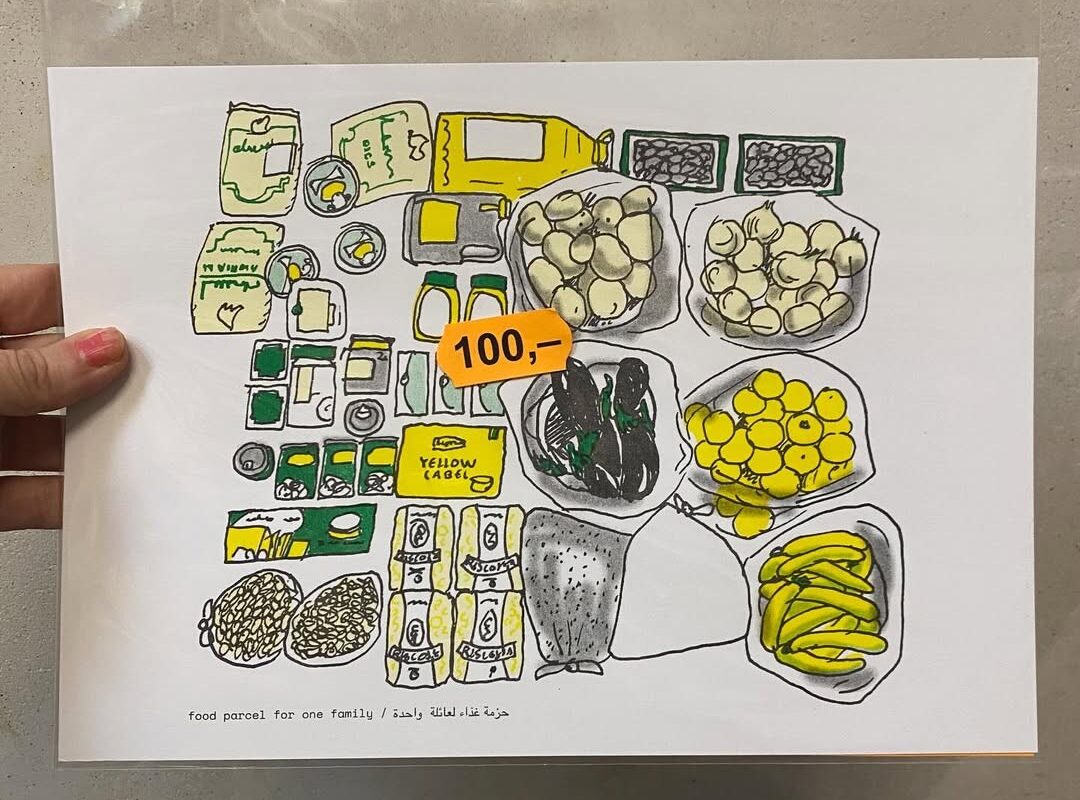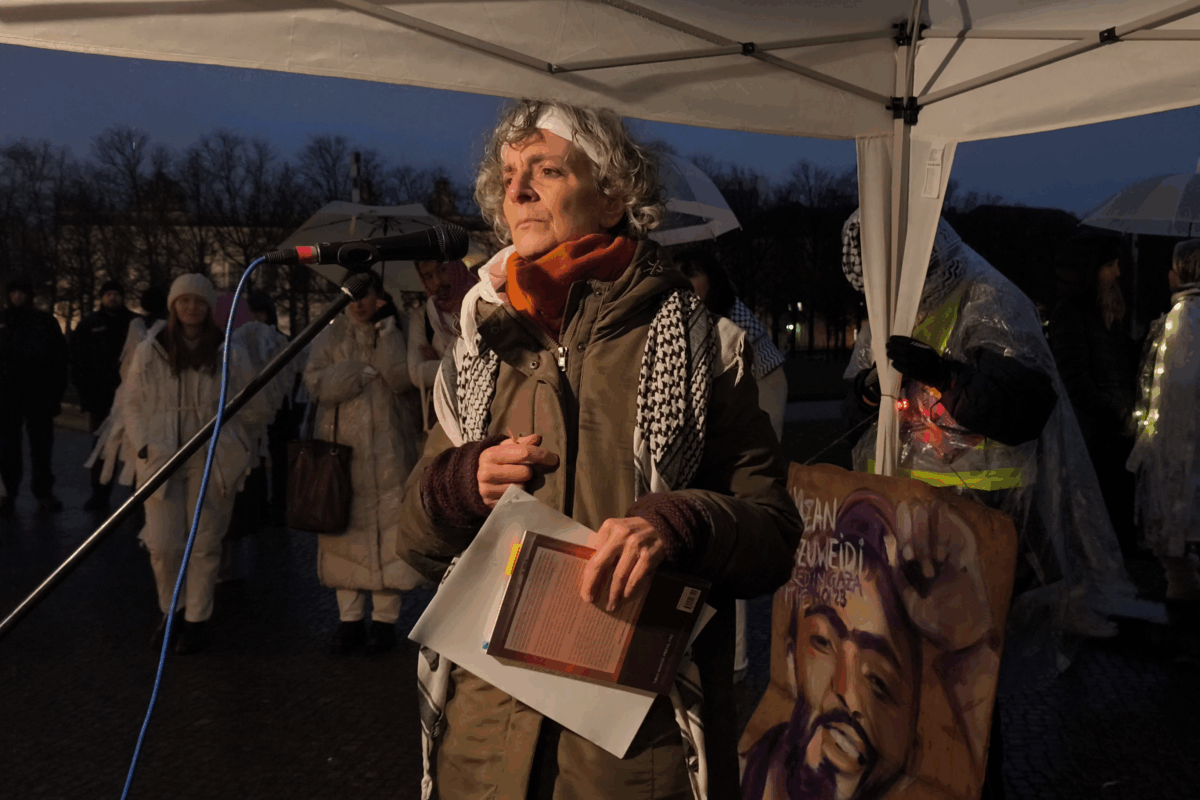Why are we talking about Steve Bell today?
Steve Bell (1951-) is probably one of the best known political cartoonists of the day in the English speaking world. No doubt conservatives, Tories and right wingers detest him for many reasons. But for those of a liberal or leftist bent, catching his cartoons in the paper ‘The Guardian’ was not to be missed.
After working for that paper for forty years, he has been dismissed. Several papers including the right wing paper the ‘Sun’ and ‘The Jewish Chronicle” [1] say this is because of alleged racist and antisemitic views. What are the charges laid at Bell? And how did British satire start? Are Bell’s ‘transgressions’ new to the genre of newspaper cartooning? Finally can distinctions be drawn between ‘acceptable’ and ‘unacceptable’ satire – how does this interact with the hoary question of ‘free speech’.
Are the charges of Antisemitism and racism against Bell justified?
To make it more tangible, let us start with some of the cartoons. First – here is the most recent one we will consider – the sanctimonious Labour Leader Sir Keir Starmer proffering Jeremy Corbyn’s head on a platter – like the bewitching Salome offering up the head of John the Baptist. [2]

It is alleged that this is antisemitic. It has been linked with several previous cartoons by Bell. For example, one showing the Israeli PM Netanyahu as a puppeteer controlling British political leaders William Hague and Tony Blair; but also this one more recently. In a cartoon that was blocked by the Guardian: [3] Netanyahu is shown meeting with Theresa May while in the fireplace is a burning Palestinian – Ms Razan Najjar. She was a 21 year old medic in Gaza who was shot and killed by an Israeli soldier on June 4 – a few days before the meeting.

Let us move to another topic – the alleged ‘racist and anti-Indian’ bias of Steve Bell. So where does this come from? Many a decent British person finds Priti Patel (Secretary of State for the Home Department since 2019) to be a hypocritical, grasping, self-serving and brutal person. Presumably Bell also finds her distasteful and is outraged by her.
He zeroes in on the many charges of bullying she faced – where she was identified as a bully. Boris Johnson rejected the findings of a November 2020, Cabinet Office inquiry which found that sources identified “strong evidence of bullying” and that Patel had breached the ministerial code following allegations of bullying in the three government departments in which she had served. [4] Bell depicts her – and her ‘boss’ – the Prime Minister – who has ‘complete confidence in her’? as a pair of bulls.
The cartoon by Steve Bell in the Guardian, featuring bovine caricatures of the home secretary and the prime minister, was a satirical take on the recent bullying controversy in which Boris Johnson threw his weight behind Patel, saying she was doing “an outstanding job”. The artwork, however, provoked derision and disillusionment among twitteratti.
Bell was immediately attacked by a section of the Indians resident and brought up in Britain who side with the most extreme conservative viewpoints who adore Mrs. Thatcher. The ‘India Weekly’ notes that the former Chancellor Sajid Javid – was quick to label this cartoon below as both anti-Hindu and antisemitic. Javid tweeted: “Reminiscent of anti-Semitic cartoons from the last century. Incredibly offensive. @guardian should know better.” [5]

The India Weekly article goes on to speak of the ‘British Tamil Conservatives who said: “This cartoon is offensive on every level. – It’s anti-Hindu. It portrays the Home Secretary, of Hindu origin as a cow. A sacred symbol for Hindus. – Its racist and – misogynist. It’s plainly unacceptable! It may constitute a hate crime.” [5]
It is worth saying that Bell is known to lambast both Left and Right wing politicians. For example he has also attacked Jeremy Corbyn. [7] But there is a broader question here.
I submit that the boundary between ‘tasteful’ and ‘distasteful’ satire – and whether it should or should not be supported, can be subject to some tests. While we leave the detailing till lower down, one is the matter of ‘how close to truth’ is the cartoon? Is it for example true that Starmer made an example of Corbyn to decapitate left-wingers in the party? Is it true that Mrs. May in meeting Netanyahu ignored and further silenced Palestinians? Is it true that Patel was-is a ‘bull-y’?
By the way although this article is not about Priti Patel, I should say that I was bought up as a pretty devout Hindu. I only see her personal attributes displayed in that article unlike the British Tamil Association. Furthermore, the identity of ‘India’ with ‘Hinduism’ is a deliberate trope that also tends to sideline as unimportant, attacks on the Muslim population of India.
What is satire and political cartooning? What marks out a great cartoonist?
If she or he has a function, the political cartoonist aims to highlight hypocrisy and complacency, and criticize political viewpoints. It should be asked – is Bell’s modus operandi any different from the great inventors of political satire? This started early in the days of print, but perhaps its modern day origin can be found in the cartoons of James Gilray (1756-1810).
Gilray was the brilliant artist and savagely funny printmaker of the 18th century – who was frequently at the fore of commentary on current events. Some of his depictions are at these references. [7] He was not shy of attacking prominent people such as William Pitt the Younger (1759-1806) who was Prime Minister in two ministries from 1783 onward.
Here is Gilray showing Pitt as ‘Midas, Transmuting All into Paper‘, published in 1797. Pitt is shown both vomiting bank notes and shitting money into the Bank of England. [8]

Nowadays, Gilray is venerated as a great political commentator, whose works are in the National Portrait Gallery. I would bet that many of the Guardian’s own leadership, and many of the leaders of the Tory party – have their own personal copies of Gilray and others’ prints on their walls. What is new now therefore? Before I suggest an approach to the issues at heart, a prior example might put this into perspective.
Is there an abstract freedom of speech or an absolute freedom of the press?
No doubt there is at times a jostling at the margins of ‘bad taste’. No doubt some will argue that the Left criticised the Charlie Hebdo cartoonists, and here the left is arguing for freedom of speech for Bell. But there is no vacuum in which ‘freedom of speech’ lives. I emphasise that I condemn the individual terrorist attacks on Charlie Hebdo cartoonists and journalists and teachers. Unquestionably.
However I think ‘Charlie Hebdo’ should be located within its own racist space. This is not an article on Charlie Hebdo, but we will only remind readers of excellent prior reports. These show the undoubtedly background context:
“Islamophobia has continued unabated in France. The summer of 2016 witnessed yet another assault on female Muslim dress codes, this time a burkini ban imposed by thirty Mediterranean municipalities, and endorsed by Socialist prime minister Manuel Valls. Shocking images of armed police ordering a Muslim woman to strip on a public beach did not appear to register with Charlie, whose front page response appeared to add insult to injury: Muslims were jokingly urged to “loosen up” and take to the beaches naked.
A further measure of how far Charlie has slipped in its sense of humor, let alone knowing leftist provocation, was seen in September when, following the devastating earthquake in central Italy, victims’ bodies were cast as various forms of twisted pasta covered in tomato sauce. When this tactless caricature was roundly condemned in Italy, artist Coco followed with the brainless chauvinistic riposte that “It wasn’t Charlie Hebdo that built your [ramshackle] houses, it was the mafia.” [9]
I do just want to say, that it was Lenin who was quite explicit about the ‘freedom of the press’ being a myth under capitalism:
“For the bourgeoisie, freedom of the press meant freedom for the rich to publish and for the capitalists to control the newspapers, a practice which in all countries, including even the freest, produced a corrupt press. For the workers’ and peasants’ government, freedom of the press means liberation of the press from capitalist oppression, and public ownership of paper mills and printing presses; equal right for public groups of a certain size (say, numbering 10,000) to a fair share of newsprint stocks and a corresponding quantity of printers’ labour.” [10]
How can we distinguish between warranted satire and un-warranted satrie?
So how in this cacophony of disagreeing voices can all this be resolved? I have already suggested one pointer – an approximation of ‘what is true? Is there a relationship to truth’? On this ground, can a contrast can be made between the overall stance of ‘Charlie Hebdo’ with its closeness to anti-Muslim – and Bell’s depiction of Starmer’s attack on the left wing of the Labour Party?
Are there other criteria – if any can help us?
This is fleshed out by Will Self, a professor of Modern Thought at Brunel University London. In a seminal discussion with Martin Rowson (another Guardian cartoonist) both agree that there is no ‘absolute right of free speech’. But then Self goes on to enumerate the questions to ask when assessing more analytically, ‘what purports to be satire.
“Who is it that the purported satire attacking? Is it attacking those in power? And if so, is it giving comfort in some way to those are assaulted by the people in power?” [11] You always have to ask, with something that purports to be satire, who’s it attacking? Are they people who are in a position of power? And, if it’s attacking people in a position of power, is it giving comfort to people who are powerless and who are assaulted, in some sense, by those powerful people?”
The Charlie Hebdo cartoons did not, he argued in that interview, meet any of these criteria for satire. Self had also written two days after the Paris attack that:
“The memorial issue of Charlie Hebdo will have a print run of 1,000,000 copies, financed by the French government; so now the satirists have been co-opted by the state, precisely the institution you might’ve thought they should never cease from attacking. But the question needs to be asked: Were the cartoonists at Charlie Hebdo really satirists, if by satire is meant the deployment of humor, ridicule, sarcasm, and irony in order to achieve moral reform?” [12]
Conclusion
To my eye – Bell is being muffled in synchrony to the warping of debates in Britain. This does not augur well for the real – true free speech – that challenges the status quo. The shrills calling out this is racist – are themselves the pot that calls the kettle black.
Footnotes
1 Lee Harpin, Controversial cartoonist Steve Bell to leave the Guardian, Jewish Chronicle London, July 17, 2020
2 Mathilde Frot, Steve Bell cartoon of Starmer and Corbyn draws claims of ‘antisemitism’. Jewish Chronicle’London October 30, 2020
3 Rosa Doherty, Guardian cartoonist Steve Bell denies rejected cartoon was antisemitic Jewish chronicle London June 7, 2018
4 Rajeev Syal and Heather Stewart, Bullying Inquiry ‘found evidence Priti Patel broke ministerial code The Guardian London; 19 November 2020;
5 Guardian cartoon by Steven Bell of March 8, 2020. ‘India Weekly, March 9, 2020
7 https://www.youtube.com/watch?v=UfVUQ1E1V_c or https://www.npg.org.uk/index.php?id=3160
8 Midas, transmuting all, into paper by James Gillray, 1797, National Portarit Gallery, at
Reference Collection; NPG D12603
9 Manus Mcgrogan Charlie Hebdo: The Poverty of Satire Jacobin, 7 January 2015.
10 Lenin, Draft Resolution On Freedom Of The Press November 7, 1932; Lenin’s Collected Works, Progress Publishers, Moscow, Volume 26, 1972
11 Interview with Rowson and Self on Channel 4 TV in 2015; at minute 3’15”.
12 Self, Will, 2015, ,The Charlie Hebdo Attack and the Awkward Truths About Our Fetish for ‘Free Speech’ Vice (9 January),




